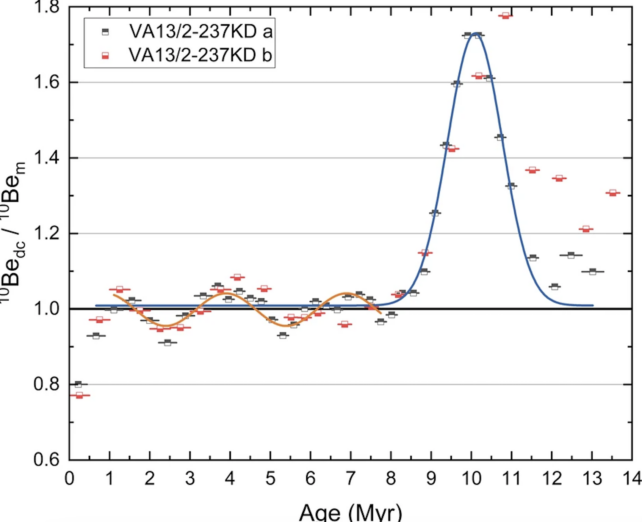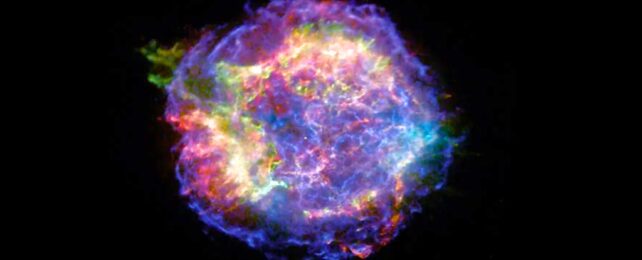An unexpected deep-sea deposit may be the smoking gun from a nearby star that exploded as a supernova in the relatively recent past.
Earlier this year, a team of scientists in Germany discovered a strange spike in beryllium-10 in the seafloor of the Pacific Ocean. This radioactive isotope forms when cosmic rays strike Earth's atmosphere. From there it falls, sinks and settles on the seafloor, before becoming embedded in the crust.
Since the beryllium-10 rain is fairly constant across the planet, the rocky record should be similarly uniform. But the team found a strange concentration that dated to about 10 million years ago. One plausible explanation is that a supernova went off close to Earth around that time.
Related: Violent Supernovae Could Have Triggered at Least 2 Extinction Events
Now, a separate team has investigated the idea by looking to the stars. The researchers used data from the European Space Agency's Gaia survey to trace the paths of the Sun and 2,725 nearby star clusters over the past 20 million years, and calculate how many supernovae should occur, on average, in those clusters over that time.

They found that there was about a 68 percent chance of a star exploding within 326 light-years of the Sun within a million years of the beryllium-10 spike. The team also identified 19 clusters that each had more than 1 percent chance of a supernova within that distance, around the time of the anomaly.
"Our results support the possibility of a supernova origin for the beryllium-10 anomaly," the team writes in their paper.
The case isn't closed just yet, though. If the spike is located only in some parts of the Pacific Ocean, that suggests some local force, such as a change in ocean currents, concentrated beryllium-10 there. If there's a cosmic cause, however, the same spike should be present all over the world at the same age.
Taking and analyzing samples from different places could help unravel the mystery.
The research was published in the journal Astronomy & Astrophysics.
If you're passionate about space, make sure to subscribe to our Spark newsletter and you could win an epic Space Coast adventure holiday in Florida.
To enter, readers simply need to subscribe to Spark, ScienceAlert's fact-checked weekly newsletter. Entries close at midnight 11 December 2025, and the winner will be randomly selected.
NO PURCHASE NECESSARY. Sweepstakes begins 10/10/2025; ends 12/11/2025. Void where prohibited.
For complete sweepstakes rules visit: sciencealert.com/space-competition-rules

